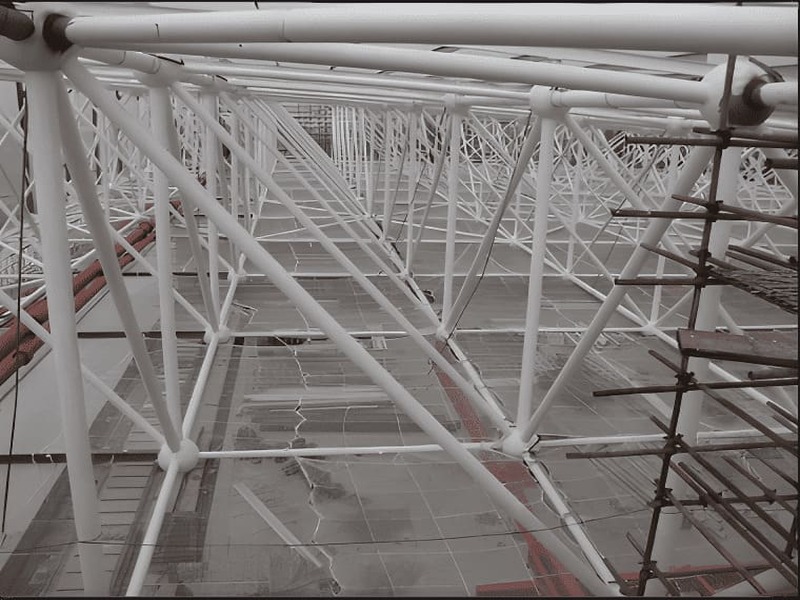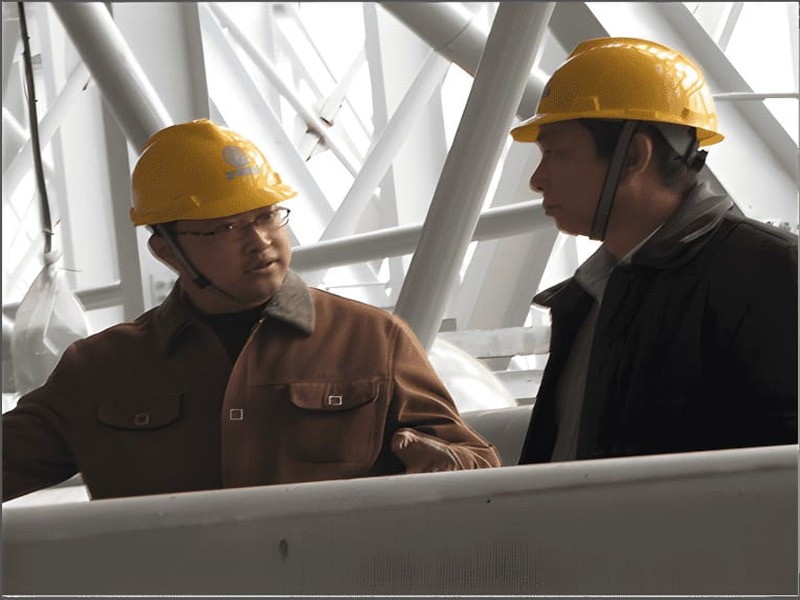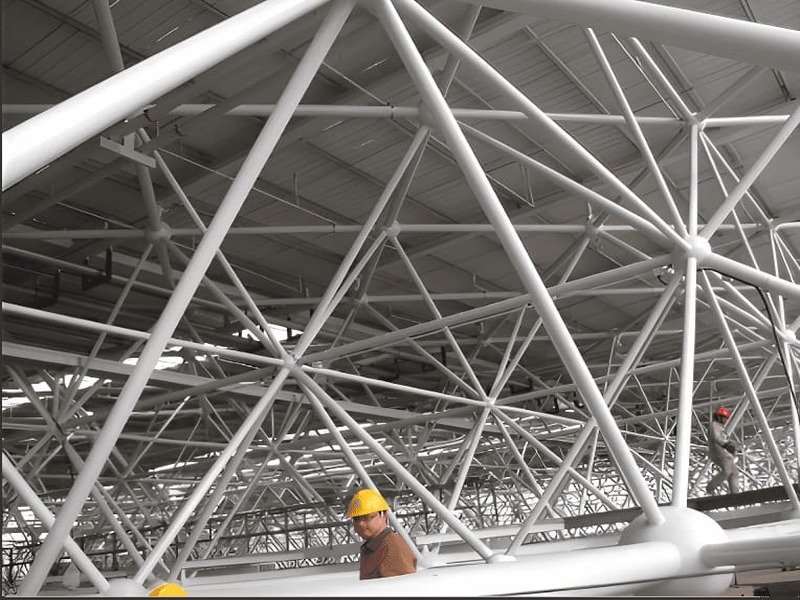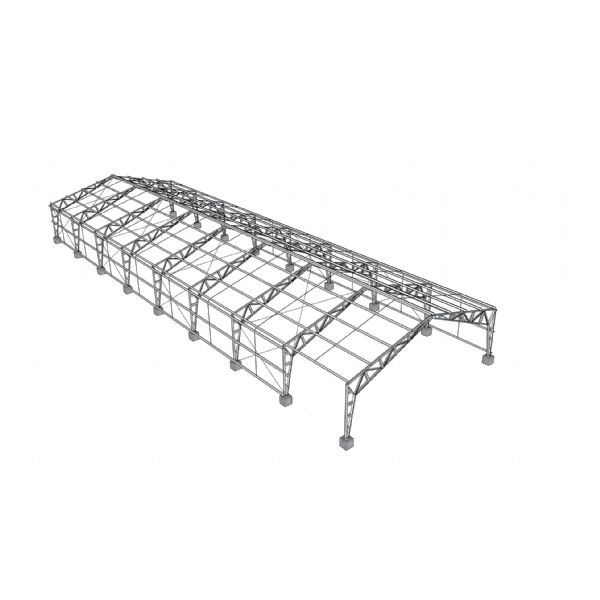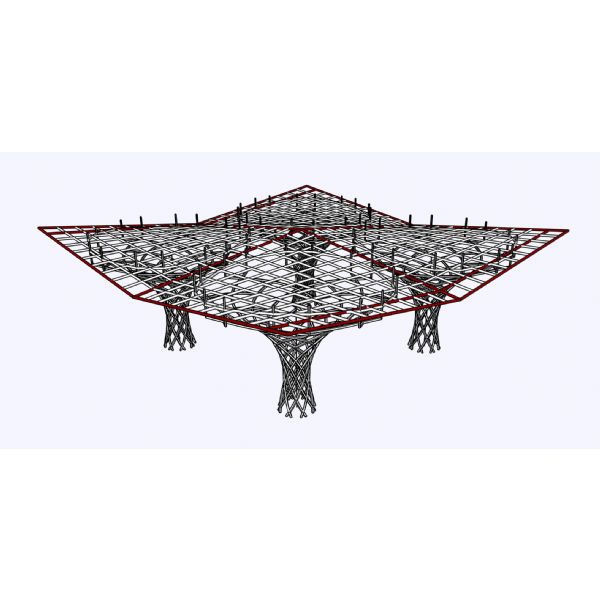Airport Terminal Detail Project
The airport building at Shanghai Hongqiao stands as a prime example of modern aviation architecture and advanced steel structure engineering. Completed in 2012, this facility has become a benchmark for large-scale airport hangars, combining cutting-edge design, robust construction, and high functionality to serve the needs of both commercial and maintenance operations. With a strategic location in Shanghai, one of China’s busiest aviation hubs, the airport building caters to a high volume of air traffic while showcasing the versatility and efficiency of steel space grid structures.
Project Overview
The Shanghai Hongqiao airport building project was conceived with the goal of creating a state-of-the-art hangar hall capable of accommodating large aircraft while maintaining high standards of safety and operational efficiency. The project’s design and construction required meticulous planning, given the massive scale of the structure and the complexity of its steel roof frame.
Location
Situated in Shanghai, the Hongqiao Airport is one of China’s primary aviation hubs. The city’s rapid development and growing demand for air travel necessitated a modern, reliable, and expansive airport building to support both passenger and cargo operations. The strategic location provides excellent connectivity and access to essential logistics and transport networks, making it ideal for a large-scale hangar facility.
Project Scale and Specifications
The airport building spans an extensive 13,500 square meters of steel roof frame within the hangar hall. This large-scale design allows the accommodation of multiple aircraft simultaneously, facilitating maintenance, storage, and operational efficiency. The structure features a 160-meter span, which highlights the project’s engineering complexity and demonstrates the capabilities of modern steel construction technologies. The steel structure type utilized is a space grid structure, renowned for its strength, flexibility, and aesthetic appeal. Space grid systems distribute loads evenly across the framework, reducing the need for excessive internal columns and creating a more open, unobstructed interior. This design is particularly suitable for large airport hangars, where unobstructed space is critical for maneuvering aircraft safely.
Architectural Design
The architectural design of the Shanghai Hongqiao airport building emphasizes functionality, durability, and visual appeal. The hangar hall’s roof and internal framework are engineered to support heavy loads, including aircraft, maintenance equipment, and environmental stressors such as wind and snow. The space grid steel structure ensures that the roof remains stable and durable while allowing natural light to penetrate the interior, creating an efficient and comfortable working environment for airport personnel.
Space Grid Steel Structure
One of the most innovative aspects of the Shanghai Hongqiao airport building is its use of a space grid structure. Unlike traditional steel frameworks, space grids are three-dimensional truss systems that provide exceptional strength while minimizing material usage. This structure distributes loads evenly across multiple nodes and beams, reducing stress concentrations and enhancing the building’s overall stability. The space grid structure allows for a large, uninterrupted interior space, which is essential for hangars. Aircraft of various sizes, from small jets to large commercial airliners, can move freely within the building without structural constraints. Additionally, the grid system provides flexibility for future expansions or modifications, ensuring the airport building remains functional and adaptable over time.
Roof Design and Engineering
The roof of the Shanghai Hongqiao airport building is a critical component of the overall structure. Covering an area of 13,500 square meters, it incorporates advanced engineering techniques to handle both static and dynamic loads. The roof design prioritizes strength, durability, and efficiency while maintaining an aesthetically pleasing profile. The space grid framework used in the roof allows for reduced weight compared to conventional truss systems, while still providing the necessary rigidity to withstand environmental forces. The roof also includes provisions for natural lighting, ventilation, and maintenance access, ensuring that operational requirements are met without compromising structural integrity.
Construction Process
The construction of the Shanghai Hongqiao airport building was a complex process that involved careful coordination between architects, engineers, and contractors. The project followed a phased approach, starting with site preparation and foundation works, followed by steel fabrication, assembly, and installation.
Foundation and Site Preparation
Given the massive scale of the metal hangar, site preparation and foundation works were critical to ensure the stability of the airport building. The foundation was designed to support the extensive steel framework, accounting for load distribution, soil conditions, and seismic considerations. Advanced surveying techniques and soil analysis were employed to determine the optimal foundation design, ensuring long-term stability and safety.
Steel Fabrication and Installation
The steel components of the airport building were prefabricated in specialized factories to ensure precision and quality. The space grid modules were carefully fabricated to exact specifications and then transported to the site for assembly. Prefabrication reduced construction time and minimized on-site errors, allowing for a more efficient construction process. Once on-site, the steel modules were assembled using cranes and specialized lifting equipment. The assembly process required precise alignment and secure connections to achieve the desired structural performance. The use of modern construction technologies and rigorous quality control ensured that the airport building met all safety and engineering standards.
Completion and Operational Readiness
The Shanghai Hongqiao airport building was officially completed in 2012, marking a significant milestone in airport infrastructure development. Upon completion, the hangar was fully operational, capable of handling multiple aircraft and supporting a wide range of maintenance and operational activities. The project’s success demonstrated the effectiveness of space grid structures in large-scale aviation facilities and set a precedent for future airport building projects in China and beyond.
Functional Features
The Shanghai Hongqiao airport building is designed to meet the diverse needs of modern aviation operations. Its open-plan interior, facilitated by the space grid structure, allows for flexible usage, including aircraft maintenance, storage, and logistical operations. The building also incorporates advanced safety systems, fire protection, and environmental controls to ensure safe and efficient operations.
Operational Efficiency
The large-span, open interior of the airport building enhances operational efficiency by allowing aircraft to be moved, positioned, and maintained without structural interference. The layout is optimized for workflow, ensuring that personnel and equipment can operate safely and efficiently. Additionally, the modular design of the space grid structure allows for easy reconfiguration if operational requirements change over time.
Safety and Durability
Safety is a paramount concern in the design of any airport building. The Shanghai Hongqiao hangar incorporates robust structural elements, fire-resistant materials, and advanced monitoring systems to ensure the safety of both personnel and aircraft. The steel space grid structure provides exceptional resistance to environmental stresses, including high winds, seismic activity, and heavy loads, ensuring the building’s long-term durability.
Significance in Modern Aviation
The Shanghai Hongqiao airport building is not only a functional facility but also a symbol of modern aviation engineering. Its successful integration of advanced steel construction, space grid technology, and operational efficiency has made it a reference point for similar projects worldwide. The building’s completion in 2012 demonstrated China’s capability to execute large-scale aviation infrastructure projects with precision and innovation.
Engineering Achievement
The project’s scale, complexity, and successful execution represent a significant engineering achievement. The use of space grid structures in a large-span airport building showcases the potential of modern steel construction techniques. Engineers and architects involved in the project employed innovative design solutions to overcome challenges associated with large spans, heavy loads, and operational requirements, resulting in a facility that meets both functional and aesthetic criteria.
Impact on Airport Operations
The Shanghai Hongqiao airport building has had a substantial impact on airport operations. By providing a large, flexible, and safe space for aircraft maintenance and storage, the hangar has enhanced the airport’s operational capacity. It supports multiple aircraft types, streamlines maintenance workflows, and contributes to the overall efficiency of airport operations, reinforcing Shanghai Hongqiao’s position as a leading aviation hub in Asia.
Future Prospects
Looking ahead, the Shanghai Hongqiao airport building is poised to continue serving as a key facility for aviation operations. Its modular design and robust steel structure allow for future expansions or adaptations to meet evolving needs. As air travel continues to grow and aviation technology advances, the hangar is well-equipped to accommodate larger aircraft, new maintenance technologies, and increasing operational demands.
Sustainability and Adaptability
The steel space grid structure contributes to the sustainability of the airport building by minimizing material use while maximizing strength and durability. Its adaptability allows for modifications without significant structural changes, ensuring that the facility remains relevant and functional for decades to come. The building also incorporates energy-efficient systems, natural lighting, and ventilation strategies to reduce operational costs and environmental impact. The Shanghai Hongqiao airport building is a remarkable example of modern aviation infrastructure. Completed in 2012, it combines innovative steel space grid technology, functional design, and operational efficiency to serve as a world-class hangar facility. With its expansive 13,500 square meter steel roof frame, 160-meter span, and strategic location in Shanghai, this airport building demonstrates the potential of modern engineering to create safe, efficient, and adaptable spaces for aviation operations. It stands as a benchmark for future airport building projects, illustrating how advanced design, precise engineering, and high-quality construction can come together to deliver an infrastructure that meets the rigorous demands of the aviation industry while providing flexibility for the future.

